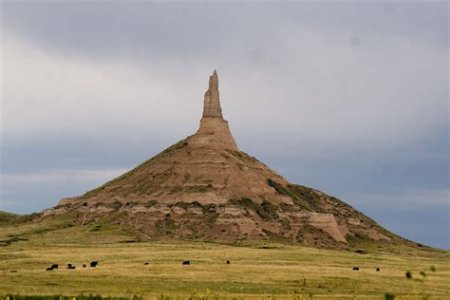CrowCross
Senior Member
- Joined
- Jun 16, 2023
- Messages
- 5,289
- Reaction score
- 1,502
- Points
- 113
According to geologist Chimney Rock is about 28 million years old. Of course there is one problem. It is eroding.
According to the Nebraska State Historical Society Chimnet rock is currently about 120 feet high and has lost about 30 feet in the last 150 years.
At that erosion rate one would think it would have been long gone millions of years ago. Heck, tens of thousands of years ago.
Then again maybe it’s not as old as some people claim.

According to the Nebraska State Historical Society Chimnet rock is currently about 120 feet high and has lost about 30 feet in the last 150 years.
At that erosion rate one would think it would have been long gone millions of years ago. Heck, tens of thousands of years ago.
Then again maybe it’s not as old as some people claim.


